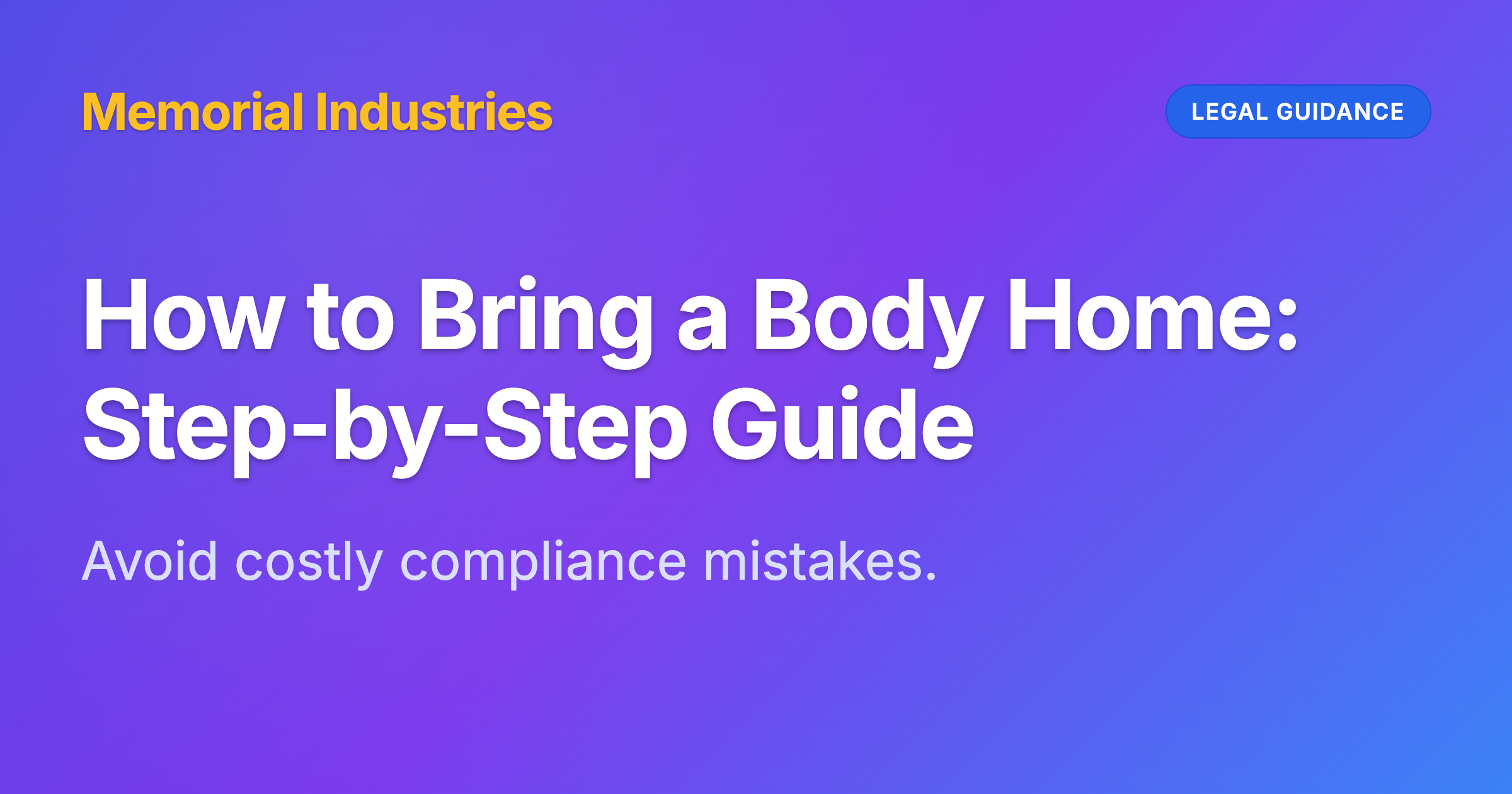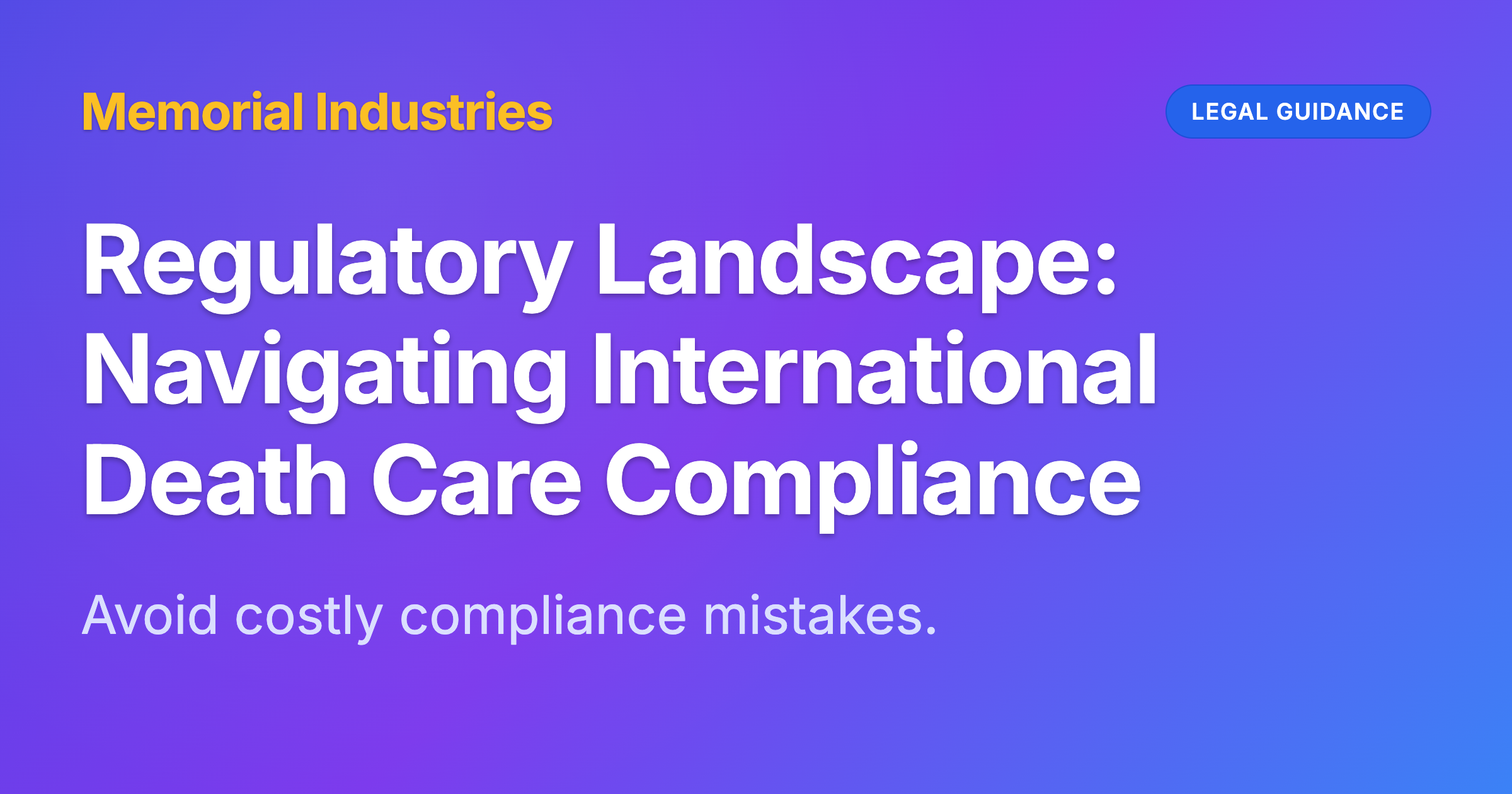
- Jan 29, 2025
- 6 min read
How to Bring a Body Home: Step-by-Step Guide
Bringing a loved one home from abroad involves a complex series of coordinated steps that must be completed in the correct order. This comprehensive guide walks you through each stage of the repatriation process, helping you understand what to expect and how to ensure everything proceeds smoothly.
International repatriation requires precise coordination between multiple agencies, strict adherence to health regulations, and careful attention to timing. Understanding this process helps families make informed decisions and avoid costly delays.
Step 1: Initial Notification and Documentation
Begin by notifying local authorities where the death occurred. This triggers the official death investigation process required by local law. Contact the nearest U.S. Embassy or consulate immediately, as they will guide you through consular procedures and help you understand local requirements that may affect the repatriation timeline.
Obtain multiple certified copies of the local death certificate, as you’ll need these for various purposes throughout the process. The death certificate typically takes 48-72 hours to process in most countries, though this can vary significantly based on local procedures and circumstances of death.
Step 2: Professional Repatriation Service Selection
Choose a licensed international repatriation service with experience in your specific origin and destination countries. Verify their credentials, including airline relationships, customs brokerage licenses, and mortuary partnerships. Professional services coordinate simultaneously with multiple agencies, preventing delays and ensuring compliance with all regulations.
Request a detailed service agreement outlining all included services, timelines, and costs. Reputable providers offer 24/7 family liaison support and transparent pricing with no hidden fees.
Step 3: Body Preparation and Embalming
International transport requires professional embalming to meet health regulations and airline requirements. This process must be performed by licensed embalmers using techniques that comply with both origin and destination country standards. The embalming process typically takes 1-2 days once authorities release the body.
Obtain official embalming certificates and health department approvals required for transport. Some countries have specific requirements for embalming techniques or chemicals used, which professional services understand and accommodate.
Step 4: Consular Procedures and International Documentation
Work with the U.S. Embassy or consulate to obtain a Consular Mortuary Certificate, which serves as official American government recognition of the death abroad. This document is essential for airline transport and customs clearance when entering the United States.
Complete all required consular procedures, which may include notarization of documents, apostille services, or additional certifications depending on the country. Embassy staff can expedite these procedures when time is critical.
Step 5: Airline Coordination and Flight Booking
Airlines have strict requirements for human remains transport, including advance booking, special handling procedures, and specific documentation. Professional repatriation services have established relationships with carriers and understand their individual requirements and capacity limitations.
Book flights well in advance, as airlines have limited capacity for human remains transport. Consider potential delays due to weather, mechanical issues, or schedule changes, and plan funeral services accordingly.
Step 6: Customs Clearance and Border Control
Prepare all required customs documentation for both departure and arrival. This includes customs declarations, transit permits, and any special authorizations required for human remains transport. Each country has specific requirements that must be met exactly.
Professional customs brokers handle interactions with customs authorities and resolve any issues that arise during clearance. They understand country-specific requirements and can expedite processing when necessary.
Step 7: Receiving Coordination and Final Transport
Coordinate with the receiving funeral home at your destination to ensure they’re prepared for arrival. This includes confirming their license to receive human remains, scheduling pickup from the airport, and planning any additional services required.
Arrange ground transportation from the arrival airport to the funeral home. Professional services coordinate this handoff to ensure continuous care and proper handling throughout the entire journey.
Timeline Management and Expectations
Most international repatriations take 7-14 days from death to arrival, though this varies based on local requirements, destination country, and complexity of documentation. Time-sensitive factors include weekends, holidays, local investigation procedures, and airline schedules.
Build flexibility into your timeline for unexpected delays. Weather, mechanical issues, documentation problems, or regulatory changes can extend the process beyond initial estimates.
Final Preparation for Arrival
Confirm all arrangements at the destination, including funeral home coordination, cemetery or crematorium bookings, and any religious or cultural ceremonies planned. Ensure all parties understand the timeline and any special requirements for the services.
Professional repatriation services provide tracking and updates throughout the journey, giving families peace of mind and allowing them to inform other family members and friends about arrival timing and funeral arrangements.

Related articles

Regulatory Landscape: Navigating International Death Care Compliance
Jan 15, 2025

What to Do When a U.S. Citizen Dies Abroad: Your Complete Crisis Response Guide
Sep 8, 2025

Should You Handle Repatriation Yourself? A Family's Critical Decision Guide
Aug 19, 2025

What to Do If a Loved One Dies Overseas: A Step-by-Step Guide
Jan 30, 2025

International Funeral Shipping Costs: Complete Breakdown
Jan 28, 2025

The First 48 Hours After a Death Abroad: What to Expect
Jan 27, 2025